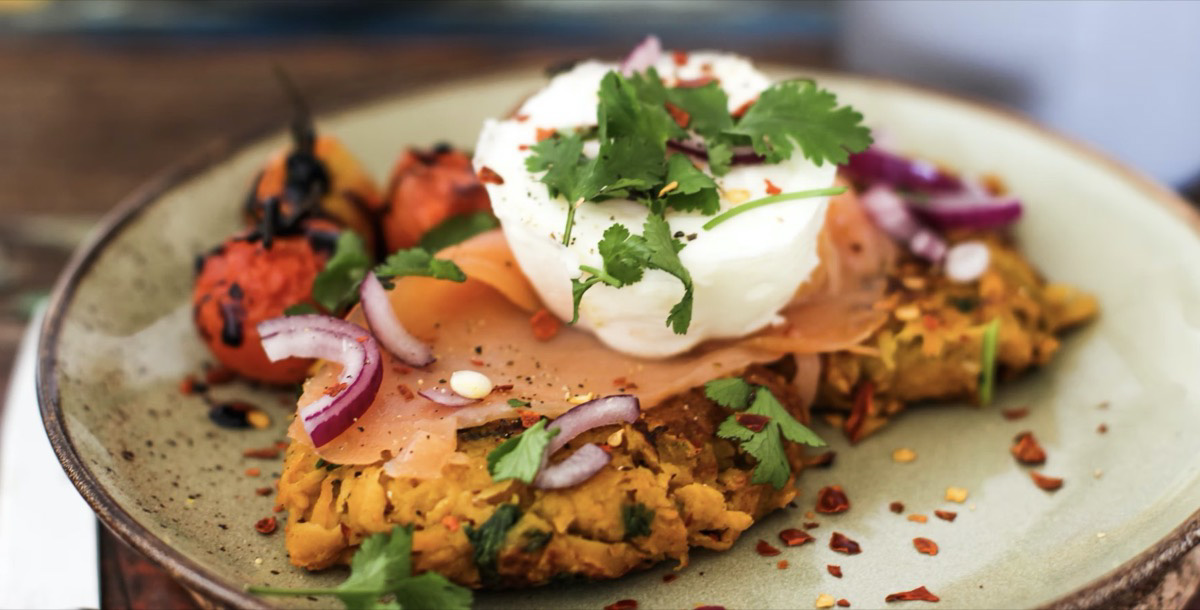3 Steps to Food Freedom

The holistic nutrition world is full of conflicting information, most of it well-intentioned and backed by scientific studies and testimonials. Many of my clients come to me with an impressive knowledge of calories and dietary theories, but ultimately they’re confused by the contradictions, and disconnected from their own instincts and body wisdom. External food rules and nutrition facts can present major obstacles in the path of a healthy relationship with food because the voices outside of ourselves often drown out the voice within that tells us what our bodies really need.
Many chronic dieters love food rules. Diets provide a sense of control and a dopamine hit because they work in the short term, and we feel good about ourselves for sticking to them. The problem is that dopamine and the need for another ‘hit’ overwhelm the sound of our inner voice, so that the communication between our bodies and our brains is all but lost to the noise of neurotransmission and what we think we want.
Complicating it further is the fact that cravings and food are frequently a repository for unmet desires in other areas of our lives, and the dopamine-driven cycle of trying to satisfy those desires by redirecting them is futile and difficult to break. For example, we can never improve our marital relationship or achieve career satisfaction by counting calories or following Keto; food rules keep us away from understanding what it is we really need. But on a chemical level, our brains literally do not know the difference.
Finding food freedom is hardly a linear process, and redefining our relationship with food and body requires an ‘unlearning’ of nutritional rules and food facts. You’d like a cup of tea, and matcha has catechins and l-theanine. But wait, you read that matcha can be riddled with heavy metals. What are you supposed to do? Your body wisdom will tell you, but you can’t connect with it if the noise of external information is louder than the messages of internal cues.
Here are 3 things you can do to begin the process of establishing communication and trust with your body:
1. Give yourself full permission to eat whatever and as much as you want.
This is scary for many of my clients because it means relinquishing control and embracing a degree of vulnerability. It requires an innate trust that we are in the early stages of building but haven’t yet established. Often the fear is that with full permission to eat without restriction, we will be at the mercy of our appetites and will continue to eat and eat and eat. This, however, doesn’t typically happen.

Instead, we start to notice how what we eat makes us feel, and how the circumstances under which we eat affect our experience of eating. By eliminating external food rules, we can tell what really nourishes us, and we find ourselves wanting to eat those things that make us feel good, and in the quantities that truly satisfy. In the end, it is not a loss of control, but rather a reclaiming of it, as we learn to exercise the power of choice informed by bodily wisdom.
2. Get rid of your food and weight loss toolbox.
Or if you can’t eliminate it completely, make it more difficult to access. Do this gradually, so that you have time to transition to a lifestyle that does not include body and food scales, diet books, and myfitnesspal. Track only one or two meals a day, for example, or move the app to a folder on your phone that’s less convenient than the home screen. Make changes that you can live with but require some degree of adjustment, and give it some time before making more changes. Small changes add up in a big way. Contrary to popular belief, there is no definitive time it takes to shift a habit, as everyone is different. Generally, I advise clients to wait until the removal of the ‘tool’ barely registers as having been removed; instead, its absence falls effortlessly into place with the lifestyle they’re designing for themselves.
3. Fully enjoy and experience everything you eat.
We live in a world that rewards efficiency and encourages running on autopilot, and it feels like there’s no time to slow down, pay attention, and enjoy the experience. And sometimes there isn’t; truthfully, not every meal is able to be eaten mindfully. But when we are able, taking the time to be intentional about what’s happening allows us to connect with ourselves. Acknowledge thoughts, feelings, and physical sensations when you sit down to eat. And please sit down to eat. Turn off the television, place your phone aside. Look at your food, smell it, feel its textures. Appreciate the experience of truly nourishing yourself. Accept what comes up, without judgment, and listen to what your body is telling you.
Above all, remember that perfectionism has nothing to do with your relationship to self, and this is not an all-or-nothing proposition. And it bears repeating: small changes add up. Some days we’ll forget, we’ll be pressed for time, or we’ll find ourselves feeling emotional and turning to food for comfort or a sense of control. And that’s okay, it’s part of a process that is nonlinear and organic, like a dance. Finding food freedom begins with paying attention to the experience, taking note of our internal cues, and getting curious about what it is that we really need.
Stacy Nelson, AWP, CYT, RM is a Holistic Nutritionist and the creator of WELL by Stacy Nelson, a mindfulness-based approach to food, health, and happiness. Please visit wellbystacynelson.com to learn more.